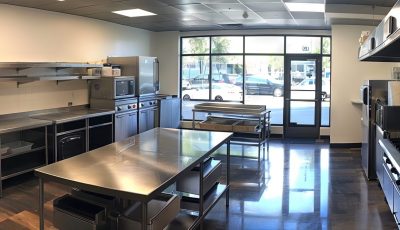Take Control of Peak Demand with 5 Strategies to Manage Peak Demand
It’s no secret that grocery stores require a great deal of energy to keep up with the day-to-day operational demands. Data from the EPA frames the scope and scale of this issue. On average, supermarkets in the United States use around 50 kilowatt-hours (kWh) of electricity and 50 cubic feet of natural gas per square foot annually — an average annual energy cost of more than $4 per square foot. For an average-size (50,000-square foot) store, this translates to $200,000 annually in energy costs, resulting in 1,900 tons of CO2 emitted into the atmosphere. That’s the same impact as emissions from 360 vehicles in one year!
Refrigeration and lighting account for over 50 percent of total energy use in the average supermarket, making these systems the best places to start looking for energy efficiency opportunities. As margins are razor-thin, reducing energy can have a sizable impact on the bottom line. Case and point: EnergyStar estimates that one dollar in energy savings is equivalent to increasing sales by $59!
You might have tried in the past to curb energy consumption. Retrofitting lights to LED lighting and installing high-energy efficiency systems are two areas that come to mind. But that’s only part of the picture. Without addressing peak demand, facility managers still have to contend with expensive fees. This is often overlooked.
With this in mind, consider this your guide to how to manage peak demand, the consequences related to lack of action and actionable steps you can take to reduce your facility’s energy bill.
Why Managing Peak Demand Matters
Peak demand and demand (kW) charges are now a significant driver of utility costs. kWh used to be the largest factor, but utilities have shifted their revenue model to be demand-focused. That’s because renewables have challenged the way utilities produce energy in very compressed timeframes that create peaks in the generation curve. Energy production has to be more dynamic than in the past, which has caused demand to increase significantly.
Managing energy costs today requires more oversight by grocery store and convenience store facility managers than was required in the past. It’s not about reducing (kWh) runtime or turning equipment off. Instead, facility managers should focus their energy on when it runs and how much kW is needed when it turns on or ramps up.
Ideally, the kwh charges should be about 60% of your total bills, composed of 40% kW charges. Too often, however, grocery and convenience stores’ energy bills are closer to 4 60% kW and 40% kWh. This is primarily driven by the peak demand surcharges, which can carry a 12-month penalty. As a real-life example, say a facility exceeds peak demand, even for a short period like 15 minutes. It could be charged at 80% of peak demand for the 12 subsequent months — even if the store’s actual consumption was much lower during those months.
Rising Utility Costs
Other factors make it harder for facility managers to balance energy use with operational performance. For one, the energy grid needs to be nimble, as renewable energy sources are widely adopted. Before renewables, utilities relied on baseload power generation from hydro, coal, and nuclear plants, which offered cheaper electricity production. However, with the transition point related to the duck curve, power generation has greater variability, often dipping below base load levels. This complicates matters, as electricity must be consumed in real-time for the sake of grid stability.
As a result, utilities have turned to natural gas peaking plants capable of real-time adjustments to match fluctuating demand. Yet, this flexibility comes at a cost. These facilities are more expensive to sustain due to the reactive nature of consumer needs. Electric utilities have also been known to impose hefty penalties through demand ratchet billing methods to incentivize businesses to curb energy usage during peak times. This means large commercial and industrial facilities have been forced to adapt to the evolving grid dynamics.
7 Ways to Curb Costs
Selecting the appropriate rate plan is not just a step but crucial in the journey toward cost reduction. The correct rate plan, tailored to your facility’s operational needs, can significantly impact your utility costs. Here are some points to consider as you explore the options.
1. Align Tariffs with Facility Operations
Be mindful that utility tariffs or rate plans match your facility’s operational patterns. Tariffs are designed to incentivize energy reduction during specific times, taking pressure off the grid.
2. Beware of Demand Ratchet
Keep demand ratchet front and center. This practice can penalize you for high peak demand events over 12 to 18 months, even if your overall demand is low. Let’s say a store’s average kWh consumption is 500 kWh, and it has a surge of energy demand to 1000 kWh for more than 15 minutes. That facility could be charged 80% of peak demand for 12 following months (so 800 kWh) even if its actual consumption for the 12-month hovers around 500 kWh.
3. Retro-commission Your Facility
Adjust equipment to operate at manufacturer specifications and identify areas for reducing energy consumption and demand. Consider retro-commissioning every two years for supermarkets.
Note: Prior to retro-commissioning, install energy meters to measure pre- and post-changes in energy savings accurately and to validate and dispute any utility bill charges.
4. Monitor Key Performance Indicators (KPIs)
Track peak kW, kWh, kW costs, and usage as KPIs. Generating kW and kWh per square foot KPIs helps you make multi-site comparisons.
5. Implement ECMs
Implement energy conservation measures (ECMs) identified in the retro-commissioning report to meet economic targets. Research and follow up on relevant utility rebates and grants for ECMs. These incentives validate energy savings programs and proven technology.
6. Roll Over Rebates and Savings
Reinvest rebates and energy savings into future projects to fund or offset costs of future ECM projects.
7. Participate in Demand Response Programs
Enrolling in Demand Response and opening automated demand response programs offered by utilities is a good idea. These programs pay you to reduce kW usage during specific periods to ease the burden on the grid, which is often more cost-effective than alternative measures like grid shutdowns or purchasing power at premium rates.
Our energy technicians and engineers are energy management systems (EMS) experts. We help reduce energy consumption and drastically cut energy costs so you can return those dollars to your company’s bottom line.
Here are a few ways we do that:
- Audit your properties and identify areas for energy savings
- Initiate a strategic energy savings plan
- Follow up on recommendations
- Take action to maintain the sustainability of your optimized system
- Manage high-volume, cross-state, multi-location roll-outs
- And more!
With CoolSys in your corner, you can make energy optimization an affordable solution.



